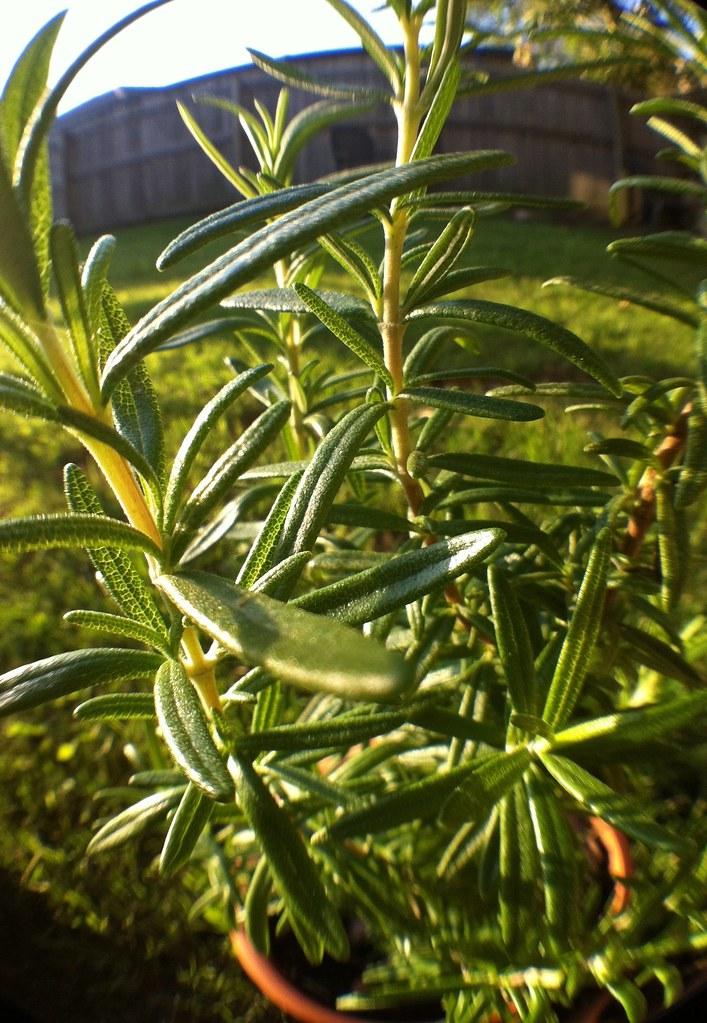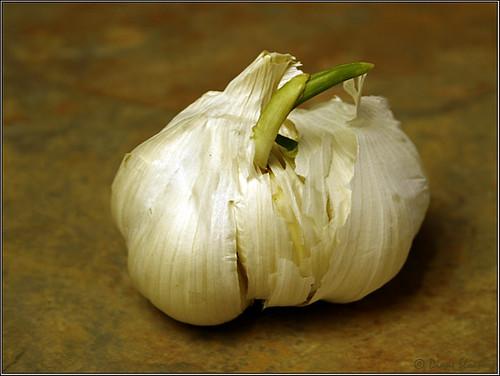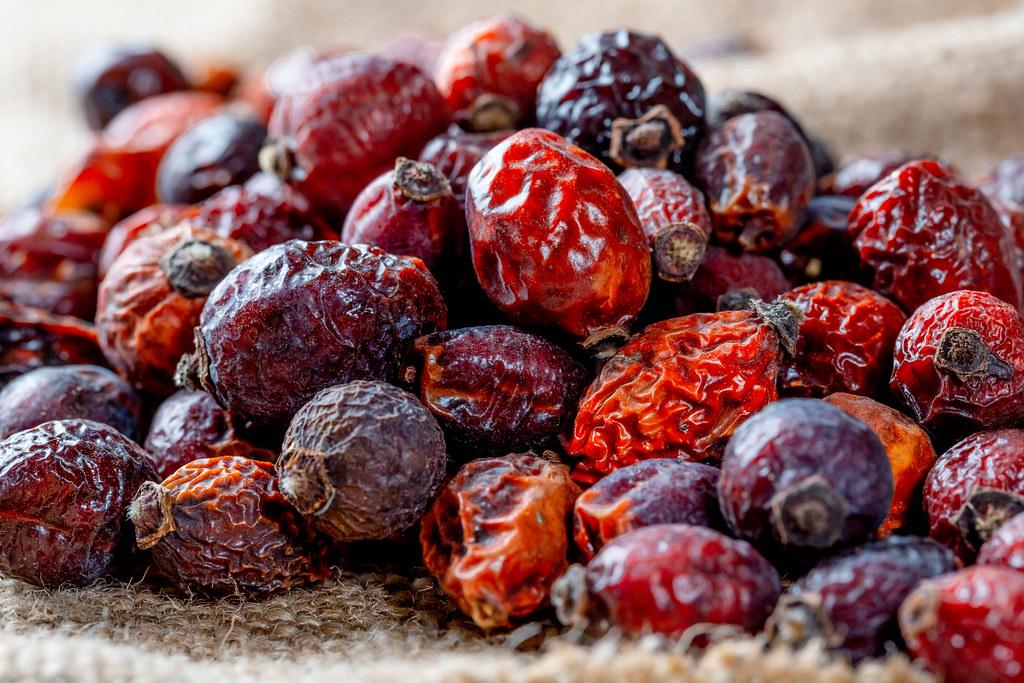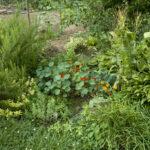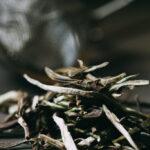Borage (Borago officinalis) is an herbaceous plant native to the Mediterranean region that is known for its striking blue flowers and numerous health benefits. The plant has been used for centuries in traditional medicine, and is now gaining popularity as an ingredient in cosmetics, herbal supplements, and even culinary dishes. In this article, we will explore the benefits of borage, and provide tips on how to grow, care for, and harvest this beautiful and versatile plant.
Benefits of Borage
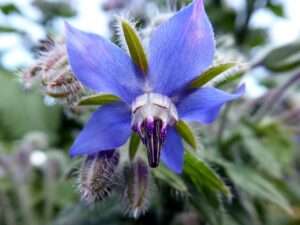
Borage is a rich source of essential fatty acids, including gamma-linolenic acid (GLA), which is known for its anti-inflammatory and anti-oxidant properties. This makes borage oil an effective natural remedy for a variety of conditions, including arthritis, eczema, and respiratory disorders. Borage oil has also been shown to improve heart health, lower cholesterol, and reduce the risk of certain types of cancer.
In addition to its nutritional and medicinal properties, borage is also valued for its cosmetic benefits. The plant contains mucilage, a substance that helps to hydrate and soothe the skin. Borage oil is commonly used in cosmetic products to improve skin texture and reduce the appearance of fine lines and wrinkles.
Borage is also a popular culinary ingredient, particularly in Mediterranean cuisine. The plant has a subtle cucumber-like flavor, and is commonly used to flavor salads, soups, and sauces. Borage flowers can also be used as a garnish, or to add color and flavor to cocktails and other beverages.
How to Grow Borage
Borage is a hardy annual plant that is easy to grow, and can be grown in a variety of conditions. The plant prefers full sun, but can also tolerate partial shade. Borage thrives in well-draining soil, and does not require a lot of water or fertilizer. In fact, over-watering or over-fertilizing can cause the plant to become too lush and bushy, which can reduce its flower production.
Borage seeds can be sown directly into the garden in the spring, or started indoors 4–6 weeks before the last frost. The seeds should be planted about 1/4 inch deep, and spaced 12–18 inches apart. Borage plants can grow up to 2–3 feet tall, and should be spaced accordingly to allow for adequate airflow and sunlight.
How to Care for Borage
Borage requires very little maintenance once it is established. The plant is drought-tolerant, and can survive in hot and dry conditions. However, it is important to water borage regularly during its early growth stages to help the plant establish strong roots.
Borage can be susceptible to powdery mildew and other fungal diseases, particularly in humid or wet conditions. To prevent these diseases, avoid watering the plant from above, and instead water at the base of the plant. It is also a good idea to space the plants adequately to allow for good air circulation.
Borage is generally pest-resistant, but can attract slugs and snails. To control these pests, use organic slug pellets or copper tape around the base of the plant.
How to Harvest Borage
Borage can be harvested throughout the growing season, but is best harvested in the early morning when the flowers are fully open. To harvest the flowers, gently pinch or snip them off the stem, being careful not to damage the rest of the plant. The flowers can be used immediately, or stored in a sealed container in the refrigerator for up to a week.
The leaves of the borage plant can also be harvested and used in culinary dishes, particularly in salads and soups. To harvest the leaves, pick them when they are young and tender, and before the plant begins to flower.
The seeds of the borage plant can also be harvested and used for their oil content. To harvest the seeds, allow the flowers to mature and turn brown. Then, cut off the flowers and hang them upside down in a warm, dry place for a few days. Once the flowers have dried, gently rub them to release the seeds. The seeds can then be pressed to extract their oil, which is commonly used in cosmetic products and herbal supplements.
Borage is a versatile and easy-to-grow plant that offers numerous health and cosmetic benefits. Whether you are looking to improve your skin health, add a unique flavor to your culinary creations, or simply enjoy the beauty of its striking blue flowers, borage is an excellent addition to any garden. By following these simple tips for growing, caring for, and harvesting borage, you can experience all that this remarkable plant has to offer.
Keywords: borage, Borago officinalis, essential fatty acids, gamma-linolenic acid (GLA), anti-inflammatory, anti-oxidant, natural remedy, arthritis, eczema, respiratory disorders, heart health, cholesterol, cancer, cosmetic, mucilage, hydrate, soothe, skin, cucumber-like flavor, Mediterranean cuisine, full sun, well-draining soil, drought-tolerant, powdery mildew, slugs, snails, early morning, leaves, seeds, oil content, benefits of borage, what are the benefits of borage, benefits of borage medicinally, list of benefits of borage, list of benefits of borage in your garden, top benefits of borage, benefits of borage in tea, benefits of borage in the kitchen
Check out our Novel Writing Workbooks
Check out Little Tree Food Forest for articles on food forests and homesteading.
Check out FoodieScapes for articles on growing, fermenting and preserving food
Check out StoryScapes.World for articles on writing.
Related Content
Related Content
Subscribe to our newsletter to get information delivered to your inbox on edible landscaping, growing food and medicinal plants, growing mushrooms, foraging, fermentation, food preservation, raising small livestock, and more.








